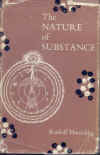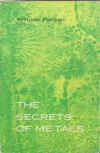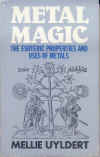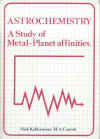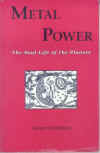|
|
| Metal-Planet Correspondences | |||||
| 'I believe that the work of Lilly Kolisko has provided for us a foundation stone upon which future alchemical experimentation can be built ... I hope that her work can be continued and extended as I can see that upon its foundations a qualitative science of the etheric forces can be built, a new alchemy and Etheric Science.' Adam McLean, Hermetic Journal 1980
Kolisko trained as a nurse and then came to dedicate herself to scientific work within the anthroposophical movement pioneered by Rudolf Steiner, at Stuttgart. She did important work on the effect of homeopathic highly-diluted solutions, and also on how lunar cycles were important in agriculture, but these things don't concern us here. In 1926, a year after Steiner's death, she first witnessed 'the working of the stars on Earthly substance' as she later called it. She was rising solutions of silver, iron and lead in filterpapers, during a conjunction of Saturn and the Sun. The normal pattern changed: 'An invisible hand had blotted out the working of the lead in my solution. The Sun had stood before the planet Saturn and here below on Earth the lead could not manifest its activity. When the Stars speak man must stand still in silent awe.' Such a phenomenon can only be explained, with traditional alchemical logic. This website looks at experiments which I have published, as I have attempted to replicate 'the Kolisko effect'. Gold is the Sun-metal. This doesn't mean that the Sun contains gold. It means that the essential being of gold is solar. A wedding-ring has to be gold, because other metals wouldn't have the heart-significance and also the sense of permanence which the sun-metal has. You may know that silver is shiny and used for films and photos. This is because its lunar-nature is sensitive, receptive and impressionable. But, you may object, that's astrology. Yes, it is: the Moon is connected with dreams and fantasy as in the phrase, 'just mooning around' So silver has these qualities. All chemistry using silver has to be done in darkness because of its lunar nature. This is something to reflect upon... Gold in contrast needs bright sunlight, and Kolisko's gold-experiments need bright daylight to develop the gold-picture. Every schoolchild should rise a gold-solution filterpaper picture -- seeing its golden hue develop in response to the sunlight -- and thereby sense the glory that is expressed by this metal. Kolisko's work gives us a new opportunity to appreciate the qualitative being of the metals, to replace the grey abstractions of modern chemistry with vivid, archetypal images. Seven metals in particular have intertwined through human history, and we can now appreciate them anew using the Hermetic maxim, 'as above, so below'. Nick Kollerstrom, Ph. D. |
|||||
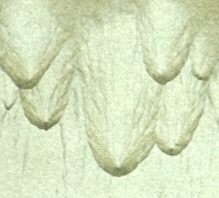 |
Iron and Silver: The rather 3-D looking forms grow as the solutions rise up the paper. The seeds or nuclei appear first, then the precipitate rays out from these. This takes about fifteen minutes to develop. It needs a fairly dark room, as light affects silver. Silver is the Moon-metal, and is therefore receptive, sensitive and image-forming by nature.
|
||||
| ' In the case of pictures of silver we find that the wealth of forms is so great that it is impossible to present one picture only of silver … In the case of gold, the colours are so rich that many pictures must be observed before we can realise the nature and character of the metal. The colours that make their appearance vary between pure yellow and dark violet.' L.Kolisko | |||||
| Gold and the Sun: |
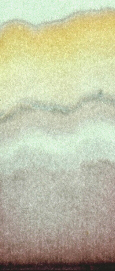 |
||||
| 'So long as substances are in a solid state they are subject to the forces of the earth, but as soon as they enter the liquid state, planetary forces come into play.' Rudolf Steiner Books published: There is an important 'main sequence' of books
written on the subject after Kolisko, each emphasizing a different aspect of the topic.
For the purpose of reactivating the Western
alchemical tradition, Kolisko published eight books on the subject. These were: 1928 Working of the Stars in Earthly substance –
this described the Sun-conjunct-Saturn experiment she did on 21.11.26, with iron, silver
and lead (15 plates). 1928
The Solar Eclipse 29.6.27 (23 plates, 3
coloured, of gold). 1929
Das Silber und der Mond (Stuttgart)
– this followed the difference between Full and New moons over several years, using
silver-nitrate steigbild. 1932 Jupiter and Tin, Working of the Stars in Earthly
substance (30 plates, 4 coloured). 1936 Gold and the Sun – Total Eclipse of 19.6.36 (43 illustrations
of gold & silver steigbild) 1947 Gold and the Sun – Total Eclipse of 20.5.47
(44 illustrations) 1948 Spirit in matter – silver and gold steigbild,
this described day-night differences 1952 Saturn und Blei, Sternwerken in Erdenstoffen – published in
Stroud, but printed in Germany. This described quite a large number of silver, iron and
lead experiments from 1926 to 1951, using both steigbild
and crystallization methods. Mars-conjunct-Saturn experiments were described, as were a
series of adjacent conjunctions and oppositions of the Moon and Saturn. 1961 Die totale Sonnenfinsternis vom 15.2.61 in a German
Jnl, English trans. Published in 1978 as
‘The Sun Eclipse’, by Andrew Clunies-Ross as ‘Kolisko Archive’. Confirmations of the Kolisko effect have been published by: I. Theodore Schwenk (in Pelikan 1973), and II. Karl Voss (Neue Aspekte 5 1965, Hamburg, summarised by Brigadier R. Firebrace, ‘Confirmation of the Kolisko Experiments’ Spica, 4, 1965) in Germany, III. Fyfe in Switzerland (‘Uber die Variabilitat von Silber-Eisen Steigbilden’, Elemente der Naturwissenschaft 6 1967), IV. Andre Faussurier in France (Conscience Ecologique et Creativite Humaine, Lyon 1975 – I believe Faussurier published some more but I never found it); V. Geoffrey Dean in 1977 (Recent Advances in Natal Astrology A Critical Review 1900-1976, p230 (a Moon-conjunct-Mars experiment in which Dean, myself and others participated, on 30.8.75, at the UK’s Astrological Association annual conference at Brighton). VI. Michael Drummond in ‘Cosmological Influences in Chemistry’ The Mercury Star Journal Autumn 1977 (A Mars-Saturn conjunction, square, trine and sextile of 1976) VII. Michael Theroux, Lunar Influence on the Electrochemical production of Colloidal Silver’ Borderlands Journal CA over the lunar eclipse of 23.3.97 colloidal silver generators showed a significant, several-fold decrease in the amount of colloidal silver generated during and just before the eclipse, returning to normal afterwards; discusses Kolisko’s work. My reports on these experiments (shown on this website) were published in 1976, ’77 and ’82 in The Astrological Journal, reprinted in the 1984 Astrochemistry. As well as these diverse replications, several articles were published by Agnes Fyfe (working at the Lukas Klinic at Arlesheim, Germany) in The British Homeopathic Journal, of her Steigbild experiments using plant sap, and how they responded to celestial events: ‘The Signature of the Planet Mercury in Plants’ (1974, 64) [which used a salt of mercury] and ‘Die Signatur der Venus im Pflanzenreich’ (Stuttgart 1978) [ this used copper salts]. I reckon these confirm Kolisko’s basic thesis, but using different metal-planet links, viz. Mercury-quicksilver and Copper-Venus, and within a more medical context.
Links to other relevant material on the web: For character-studies of the metals here used, see:
|
|
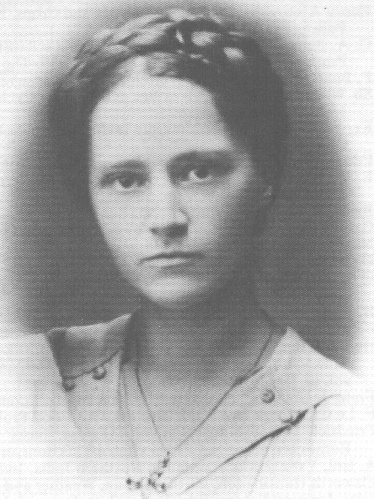 Lilly
Kolisko's work links together the planets and their metals, Heaven and Earth. The meetings
of the planets were recorded by chemical process. She employed the age-old alchemical
notion of specific correspondences whereby a particular metal 'belonged' to a planet; and
got it to work by a chemical procedure using the metallic reagents in solution. The metals
traced pictures on the papers, pictures having form. That form, typically, faded away
during the celestial event, then came back afterwards. Thus the experiments told her when
and for how long the celestial influence worked.
Lilly
Kolisko's work links together the planets and their metals, Heaven and Earth. The meetings
of the planets were recorded by chemical process. She employed the age-old alchemical
notion of specific correspondences whereby a particular metal 'belonged' to a planet; and
got it to work by a chemical procedure using the metallic reagents in solution. The metals
traced pictures on the papers, pictures having form. That form, typically, faded away
during the celestial event, then came back afterwards. Thus the experiments told her when
and for how long the celestial influence worked. 